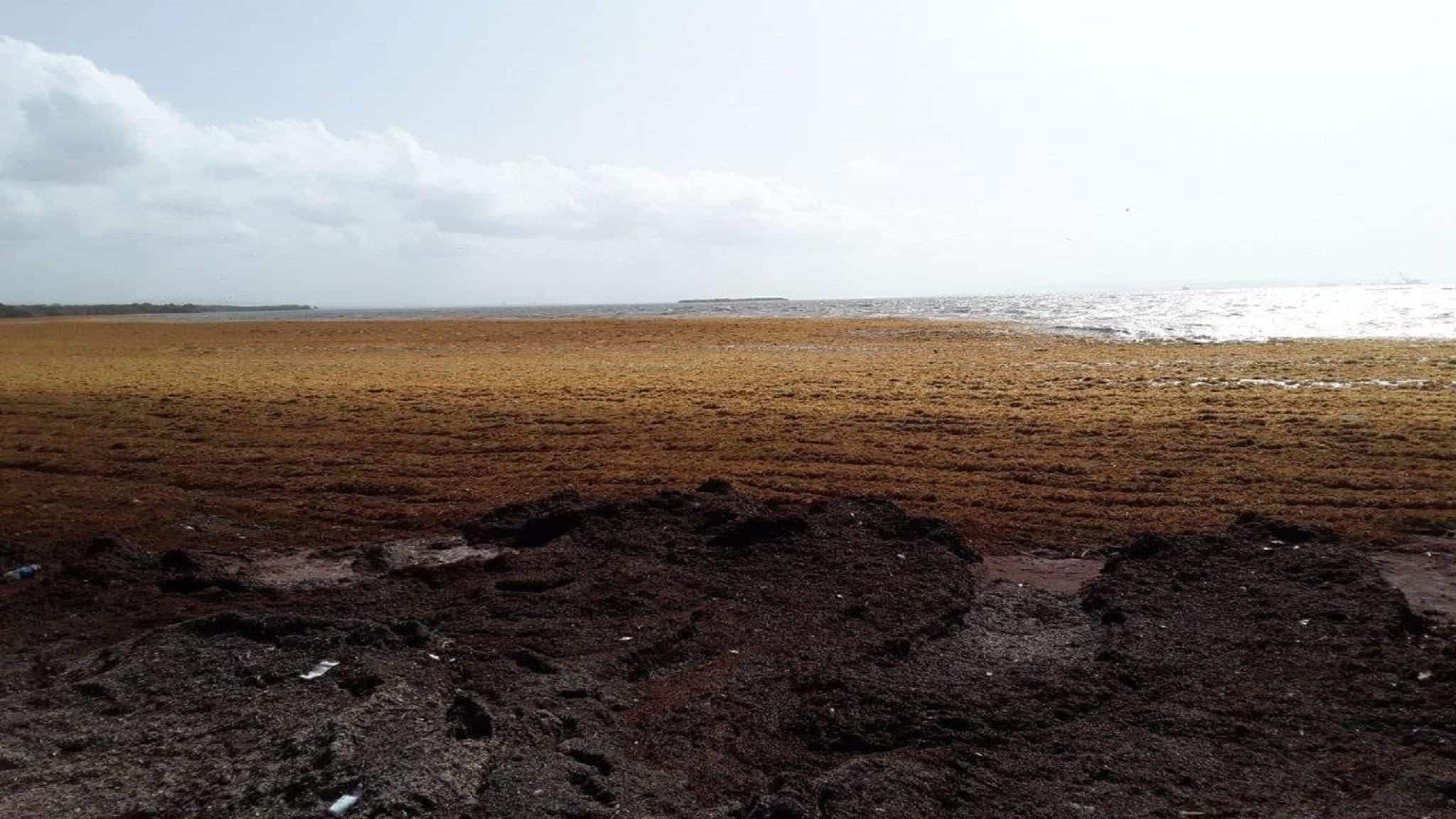As for many other problems that we have to deal with, it is also true for the handling of the Sargassum Seaweed that we have to collect enough data to develop a promising strategy that acknowledges different aspects.
We know from studies of Chuanmin Hu at the University of South Florida St. Petersburg and his colleagues that there is a recurring belt of seaweed that, at its maximum in 2018, extended over a distance of more than 8,850 kilometers and had a biomass of more than 20 million tonnes. (https://www.marine.usf.edu/legacy/news-and-events/scientists-discover-the-biggest-seaweed-bloom-in-the-world/)

Too much of a good thing
Sargassum hosts a rich diversity of life, including other algae, crustaceans, fish, turtles, and birds. But as the saying goes, there is “too much of a good thing.” Sargassum is a vital habitat that becomes unpleasant because there is too much of it. And too much can have adverse effects on coastal ecosystems. When it washes ashore, the seaweed rots attract insects and repel beachgoers and have a substantial negative impact on tourism in the Caribbean.

Impact on Tourism
Edmund Bartlett, Minister of Tourism in Jamaica, calculated the costs of cleaning up the unprecedented levels of sargassum seaweed in 2018 to US$120 million. I attended a meeting hosted by the minister in July 2019 at UWI’s Global Tourism Resilience and Crisis Management Centre (GTRCM), where Mister Bartlett said: “As active stakeholders in the sector we understand the inestimable value of tourism to stable and prosperous Caribbean economies. Tourism remains the single most important catalyst of sustained economic livelihoods in the region.” He also expressed the unsightly appearance, visitor complaints, and the possibility of reputational damage.

The Marine Macroalgae Research Lab at Florida International University (MMRL-FIU) has developed an app for mobile phones to document the situation of Sargassum Seaweed. The user of the app can upload meaningful images of shore sections with a Sargassum. But also photos of beach sections without Sargassum are a helpful information. The information is stored centrally, evaluated, and placed in a transparent database for further analysis.
The Sargassum Watch is using Epicollect5. Epicollect5 is a free, open-source citizen science app that is both compatible with Android and IOS. This app was initially developed in Imperial College, London, and has since been used on various citizen science projects.
Since almost all students of the CMU have a mobile phone, I would like to suggest that we start an initiative to create an overview of the Sargassum contamination on Palisadoes Peninsula and the surrounding areas with the help of our students.
And we can help to collect these data
Instructions to use Epicollect5 for Sargassum Watch


